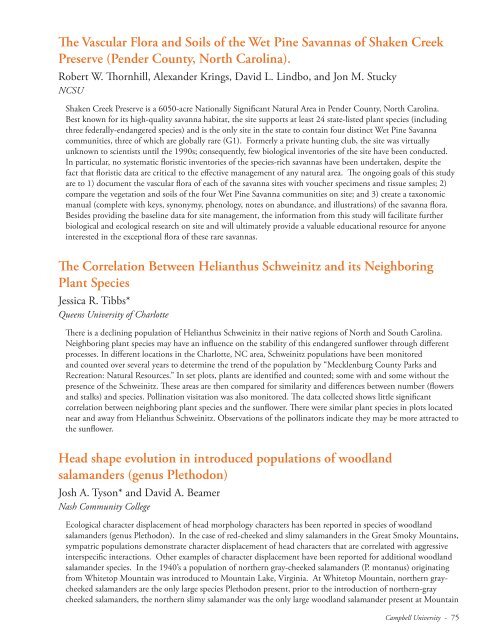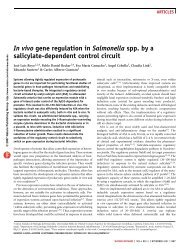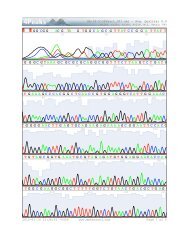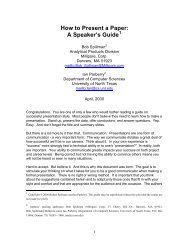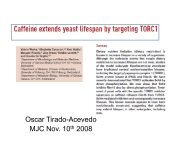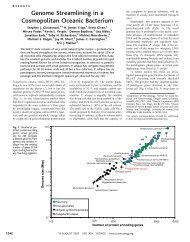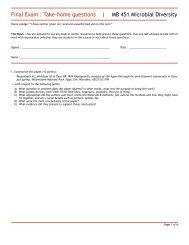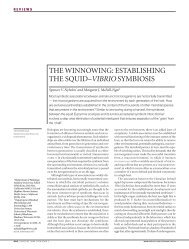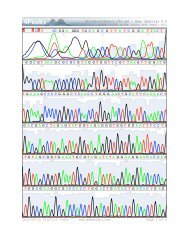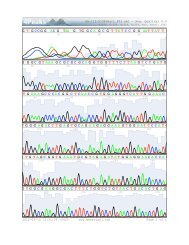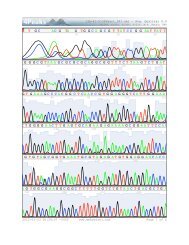Schedule and Program - North Carolina Academy of Science
Schedule and Program - North Carolina Academy of Science
Schedule and Program - North Carolina Academy of Science
Create successful ePaper yourself
Turn your PDF publications into a flip-book with our unique Google optimized e-Paper software.
The Vascular Flora <strong>and</strong> Soils <strong>of</strong> the Wet Pine Savannas <strong>of</strong> Shaken CreekPreserve (Pender County, <strong>North</strong> <strong>Carolina</strong>).Robert W. Thornhill, Alex<strong>and</strong>er Krings, David L. Lindbo, <strong>and</strong> Jon M. StuckyNCSUShaken Creek Preserve is a 6050-acre Nationally Significant Natural Area in Pender County, <strong>North</strong> <strong>Carolina</strong>.Best known for its high-quality savanna habitat, the site supports at least 24 state-listed plant species (includingthree federally-endangered species) <strong>and</strong> is the only site in the state to contain four distinct Wet Pine Savannacommunities, three <strong>of</strong> which are globally rare (G1). Formerly a private hunting club, the site was virtuallyunknown to scientists until the 1990s; consequently, few biological inventories <strong>of</strong> the site have been conducted.In particular, no systematic floristic inventories <strong>of</strong> the species-rich savannas have been undertaken, despite thefact that floristic data are critical to the effective management <strong>of</strong> any natural area. The ongoing goals <strong>of</strong> this studyare to 1) document the vascular flora <strong>of</strong> each <strong>of</strong> the savanna sites with voucher specimens <strong>and</strong> tissue samples; 2)compare the vegetation <strong>and</strong> soils <strong>of</strong> the four Wet Pine Savanna communities on site; <strong>and</strong> 3) create a taxonomicmanual (complete with keys, synonymy, phenology, notes on abundance, <strong>and</strong> illustrations) <strong>of</strong> the savanna flora.Besides providing the baseline data for site management, the information from this study will facilitate furtherbiological <strong>and</strong> ecological research on site <strong>and</strong> will ultimately provide a valuable educational resource for anyoneinterested in the exceptional flora <strong>of</strong> these rare savannas.The Correlation Between Helianthus Schweinitz <strong>and</strong> its NeighboringPlant SpeciesJessica R. Tibbs*Queens University <strong>of</strong> CharlotteThere is a declining population <strong>of</strong> Helianthus Schweinitz in their native regions <strong>of</strong> <strong>North</strong> <strong>and</strong> South <strong>Carolina</strong>.Neighboring plant species may have an influence on the stability <strong>of</strong> this endangered sunflower through differentprocesses. In different locations in the Charlotte, NC area, Schweinitz populations have been monitored<strong>and</strong> counted over several years to determine the trend <strong>of</strong> the population by “Mecklenburg County Parks <strong>and</strong>Recreation: Natural Resources.” In set plots, plants are identified <strong>and</strong> counted; some with <strong>and</strong> some without thepresence <strong>of</strong> the Schweinitz. These areas are then compared for similarity <strong>and</strong> differences between number (flowers<strong>and</strong> stalks) <strong>and</strong> species. Pollination visitation was also monitored. The data collected shows little significantcorrelation between neighboring plant species <strong>and</strong> the sunflower. There were similar plant species in plots locatednear <strong>and</strong> away from Helianthus Schweinitz. Observations <strong>of</strong> the pollinators indicate they may be more attracted tothe sunflower.Head shape evolution in introduced populations <strong>of</strong> woodl<strong>and</strong>salam<strong>and</strong>ers (genus Plethodon)Josh A. Tyson* <strong>and</strong> David A. BeamerNash Community CollegeEcological character displacement <strong>of</strong> head morphology characters has been reported in species <strong>of</strong> woodl<strong>and</strong>salam<strong>and</strong>ers (genus Plethodon). In the case <strong>of</strong> red-cheeked <strong>and</strong> slimy salam<strong>and</strong>ers in the Great Smoky Mountains,sympatric populations demonstrate character displacement <strong>of</strong> head characters that are correlated with aggressiveinterspecific interactions. Other examples <strong>of</strong> character displacement have been reported for additional woodl<strong>and</strong>salam<strong>and</strong>er species. In the 1940’s a population <strong>of</strong> northern gray-cheeked salam<strong>and</strong>ers (P. montanus) originatingfrom Whitetop Mountain was introduced to Mountain Lake, Virginia. At Whitetop Mountain, northern graycheekedsalam<strong>and</strong>ers are the only large species Plethodon present, prior to the introduction <strong>of</strong> northern-graycheeked salam<strong>and</strong>ers, the northern slimy salam<strong>and</strong>er was the only large woodl<strong>and</strong> salam<strong>and</strong>er present at MountainCampbell University - 75


